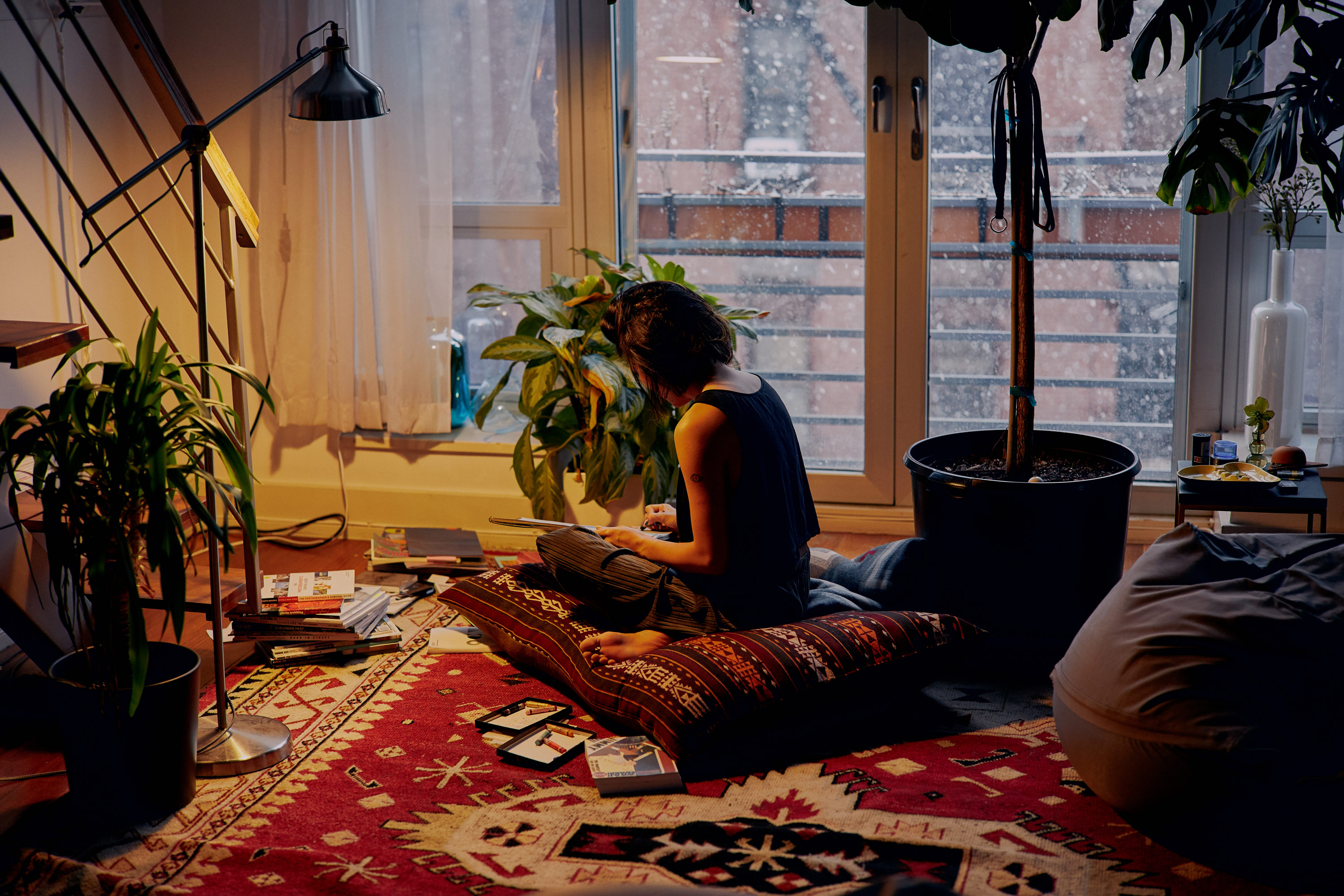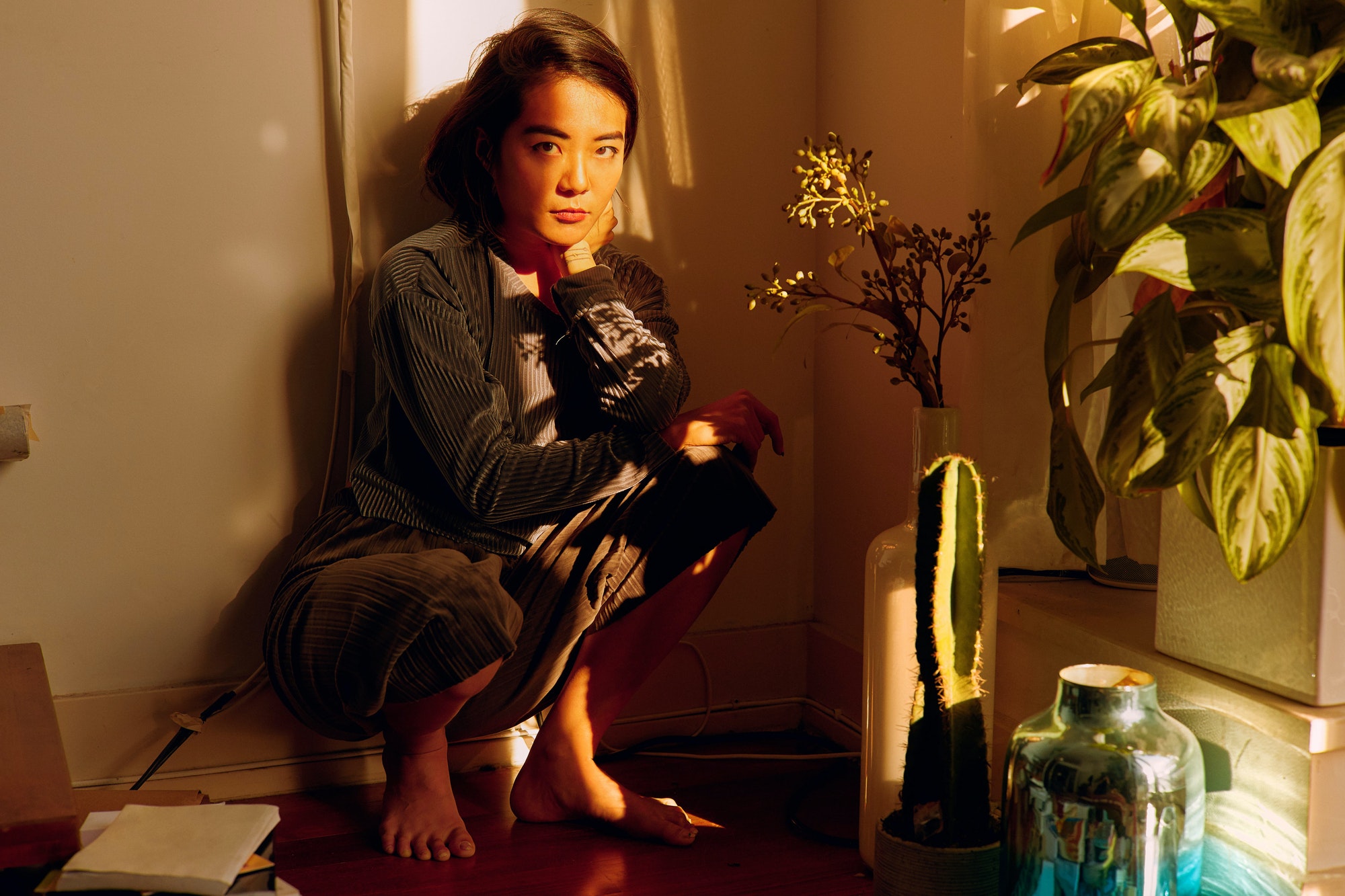
- Interview by Brandi Katherine Herrera March 22, 2018
- Photography by Collin Hughes
Shawna X
- artist
- designer
Shawna X was born and raised at a cultural crossroads; her Chinese heritage on the one side, and a newly-formed Asian American identity on the other. When she moved to the US from China at the age of 7, she quickly realized that language was a barrier to connecting with other kids. So she learned to cultivate a different, more universal kind of language—drawing. Here, the Brooklyn-based artist/designer reflects on rejecting her family’s expectations for her future, and how she eventually reconnected with her roots through art. Touching on ethnicity, sexuality, tokenism, and cultural pride, Shawna gives us a glimpse into the backstory that’s informed her iconic illustrations and paintings.
I can’t believe I missed you during your visit to Portland! I want to start there, because you grew up in Portland, which has become known as a city that fosters creativity and embraces “weirdness”. In what ways did your upbringing here shape your ideas about art and creativity? Portland definitely helped foster my ability to be myself. It’s complicated, though, because part of my upbringing was actually in China. My parents had moved to Portland, but I didn’t join them until I was about seven years old. So China, and its culture, shaped the earlier aspects of my life. Even though Portland is a place that’s now known for encouraging weirdness, when I was growing up there it was pretty homogenous. It was really white—most of the people I was surrounded by didn’t understand me, or what I was trying to communicate. That was hard for me, especially because I was so new to this country and its culture, and I was a child. I had to express myself through my artwork instead of language, because I didn’t know how else to communicate.
I didn’t realize that you had lived in China until you were seven. How old were you when your parents moved to Portland? They moved when I was three, so I grew up with my grandparents until I was seven. I neglected my own culture in a lot of ways when I moved to Portland. It was really challenging to be different in a city like that at the time, where there were so few minorities. It wasn’t until more recently that I even realized why I became an artist. I think it was because I wanted to be able to connect with others, and to share the difficult feelings I was experiencing. I didn’t know how else to express all of that as a child, so I just did it in the best way I could, which was doodling and drawing comics, and then sharing that with my friends. It was like a universal language.
So do you feel you were able to reach other kids through your artwork rather than with language? Definitely. I learned English really fast, though, because I just needed to talk. I talk a lot as you can tell. (laughing) And I learned English within six months.
That’s impressive! I was obsessed. I just needed to learn how to communicate my feelings. But, I remember drawing a lot at that time as well. I went to Buckman elementary school—you’re from Portland, right?
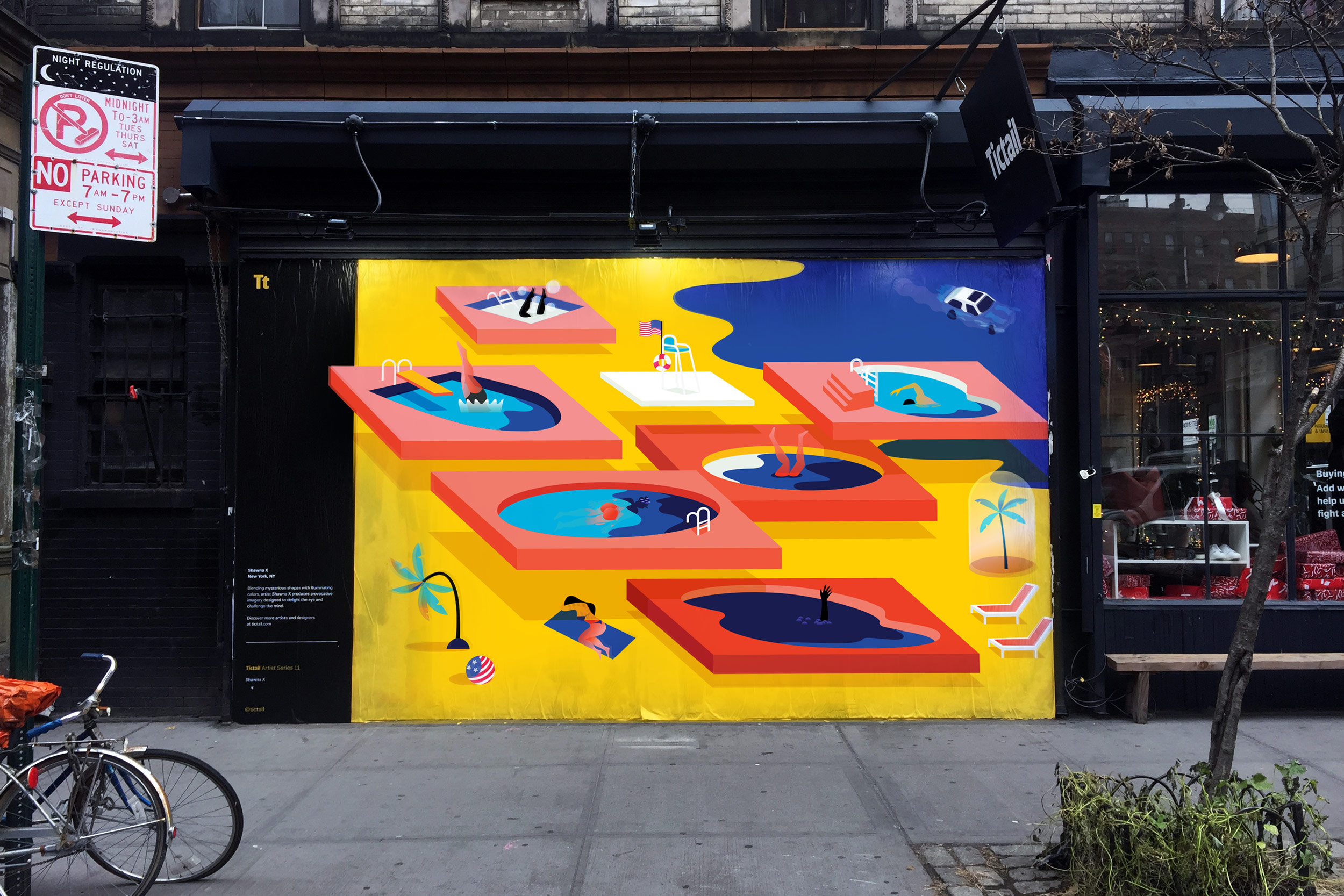
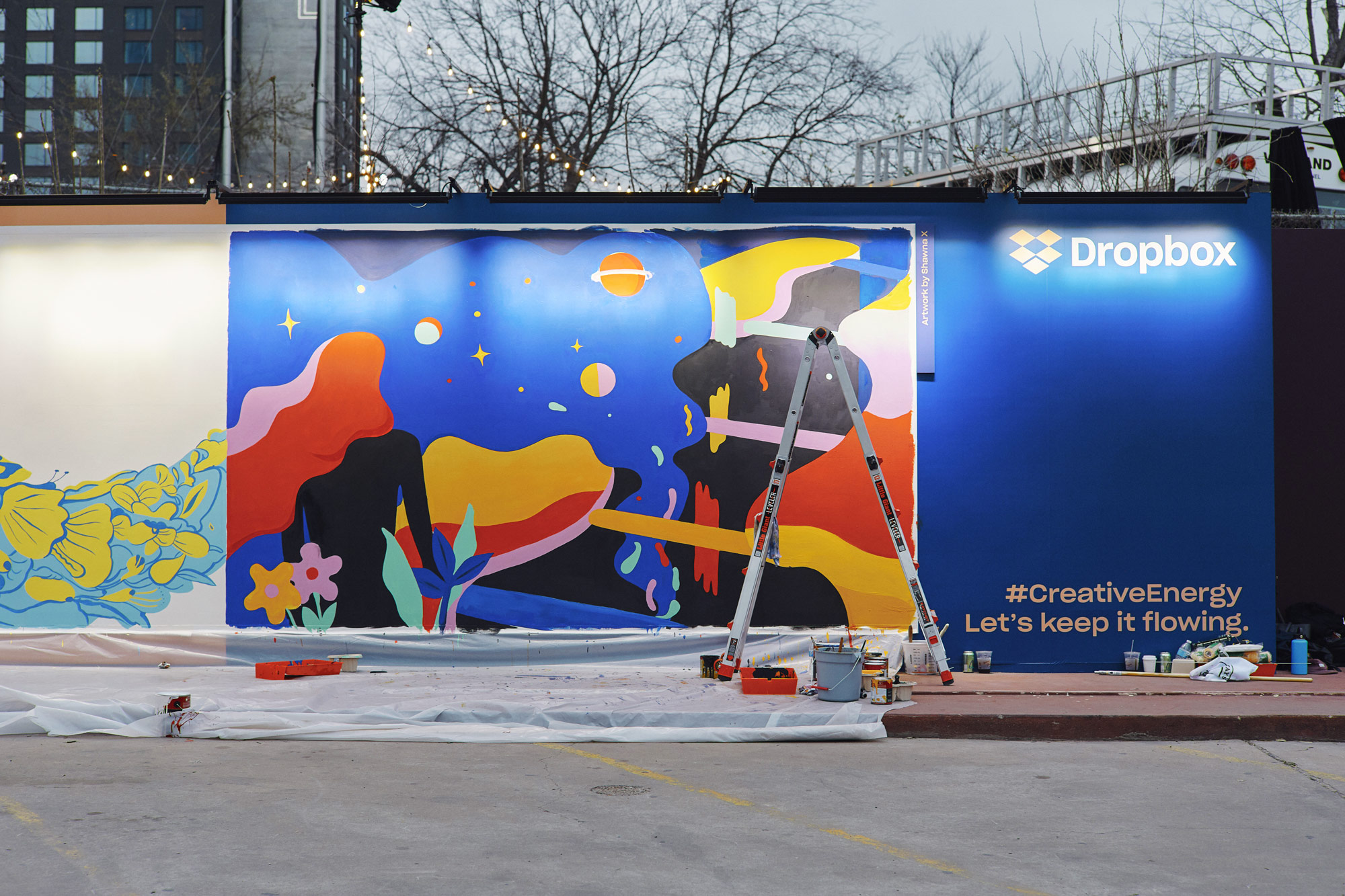
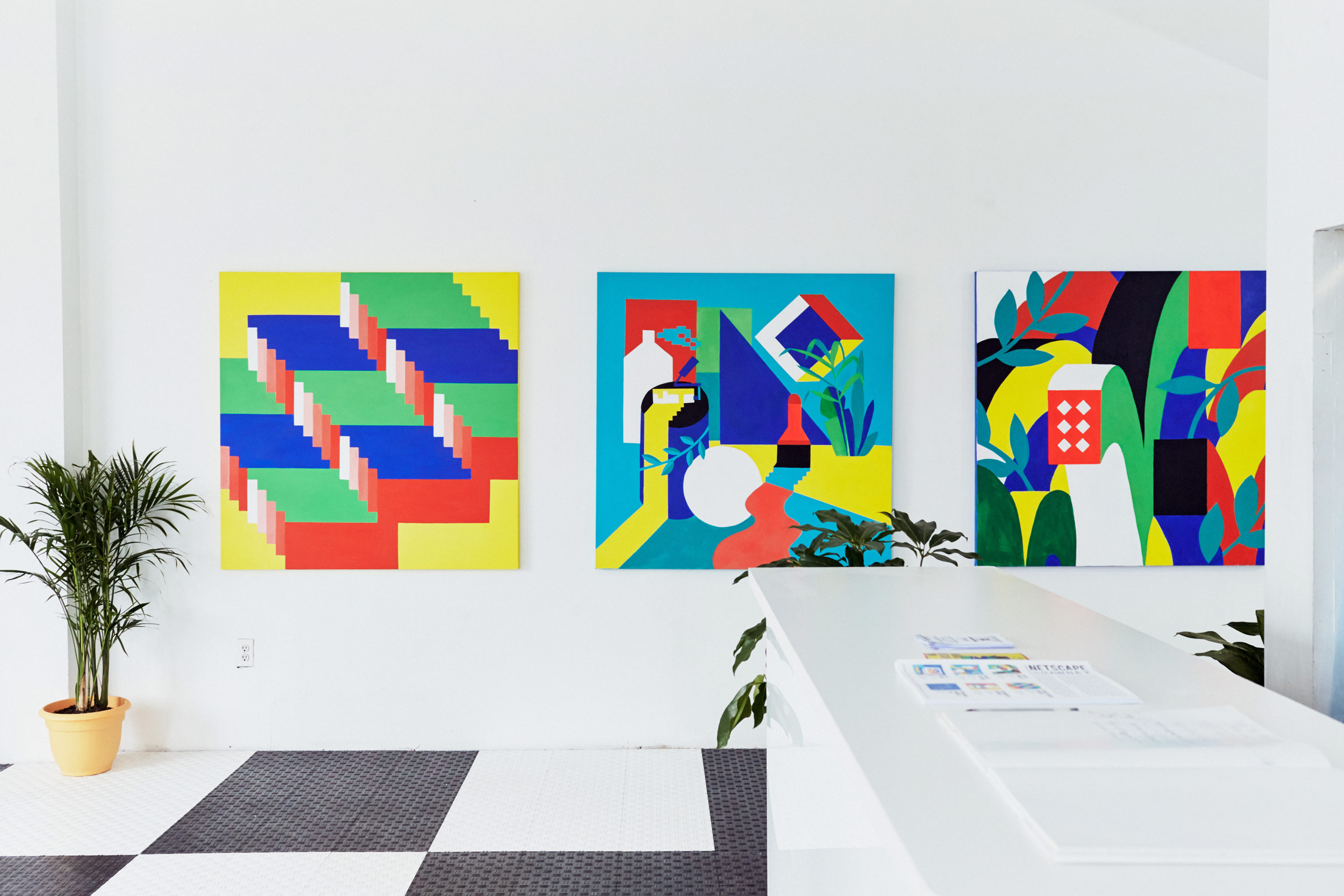
“I had to express myself through my artwork instead of language, because I didn’t know how else to communicate.”
I am, and I know Buckman well. I live right next to that neighborhood, over in Sunnyside. I went there for a year, and I remember making friends by drawing pictures of them. (laughing) That was how I communicated. One of the kids became a close friend of mine, and I think that’s also partly why I learned English so quickly.
I also took art classes at a Chinese school in Portland, where a small community of immigrants send their kids for continuing education with the language and culture. But it was so technical. It wasn’t about learning to express yourself, it was literally about how to draw things properly; like the proper proportions, and shading, and things like that. I learned technical skills from that class, but had to learn how to express myself outside of that community.
I want to ask you so many questions about that, but want to focus in first on that continuing education around language and culture. You mentioned you neglected your own cultural heritage after moving to the US—were you able to reconnect with it, or with your family, through those classes? And, in what ways do you think that may have informed the work you’d eventually go on to make? I didn’t really feel connected to my Chinese family. I think it’s a story that many Asian Americans will tell, which is that their families don’t really understand that a creative job or life is something you can even pursue. It’s the kind of lifestyle and work that’s geared toward expression, whereas many Asian Americans want their children to pursue something they feel is more traditional and prestigious.
My family in China was academically oriented. They wanted me to go to Harvard for grad school, which is so typical. As a reaction to that, I actually shut myself off from the Chinese community and my family for a long time. I rejected it, because I didn’t feel like they accepted me for who I was—a creative person. On top of that, Americans didn’t really accept me as part of their society and culture because I was Asian. You struggle so much to assimilate as an immigrant, but you’re still a foreigner. I had so many contradictory thoughts and feelings about being Asian American, that I think I shied away from the culture as a way of trying to fit in here, in America. Even though being Chinese is such a huge part of my heritage, it wasn’t really until the last few years that I started to come back around to my culture.
Now, I realize that people my age have the privilege of establishing a new kind of culture in America. I see that with a lot of my Asian American friends. They’re American, but ethnically Asian, and are starting to establish their own identity around what that means to them.
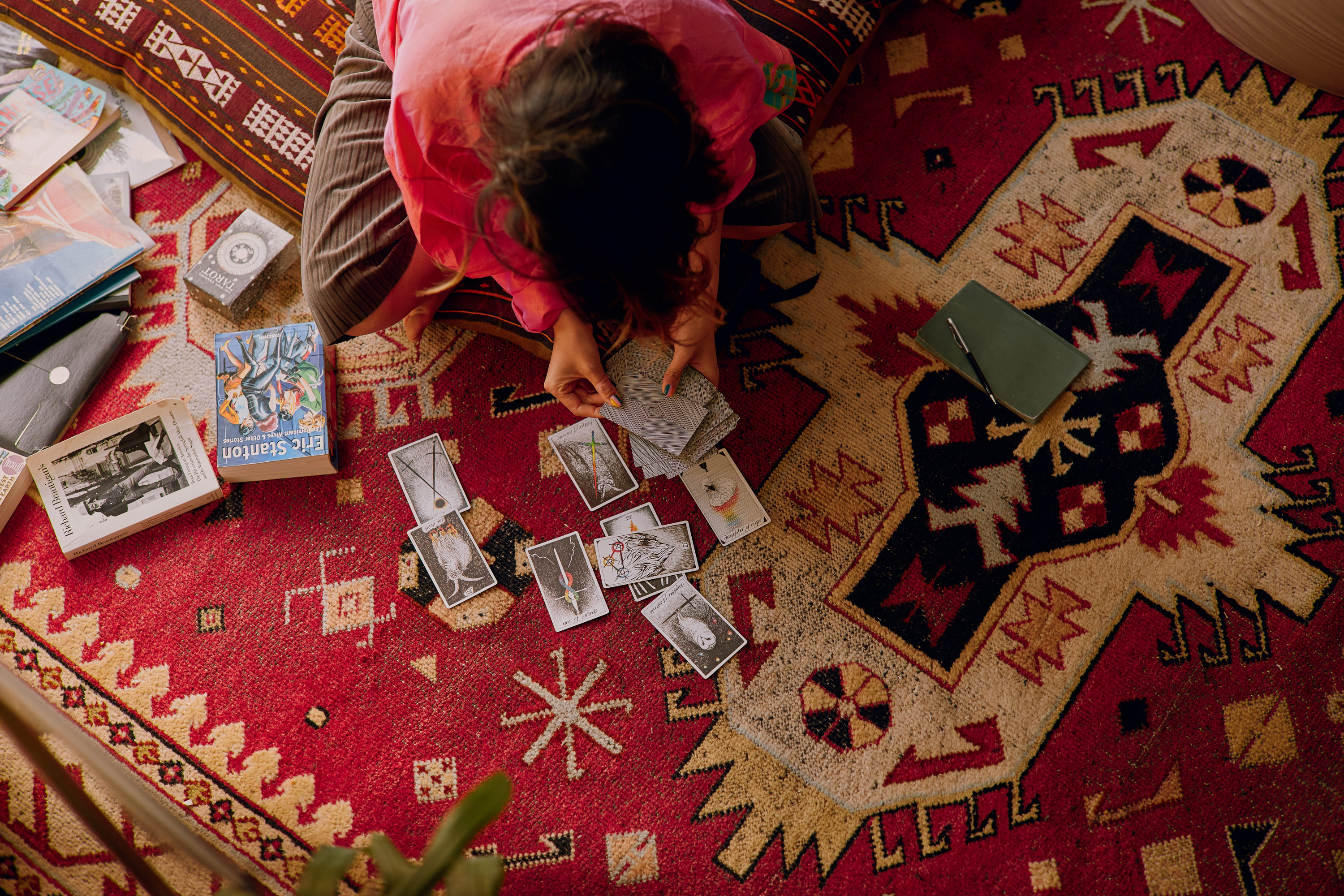
“I don’t need to worry so much about how other people are categorizing me, as long as I’m learning about myself in the process, and feel good about how I’m categorizing my own work.”
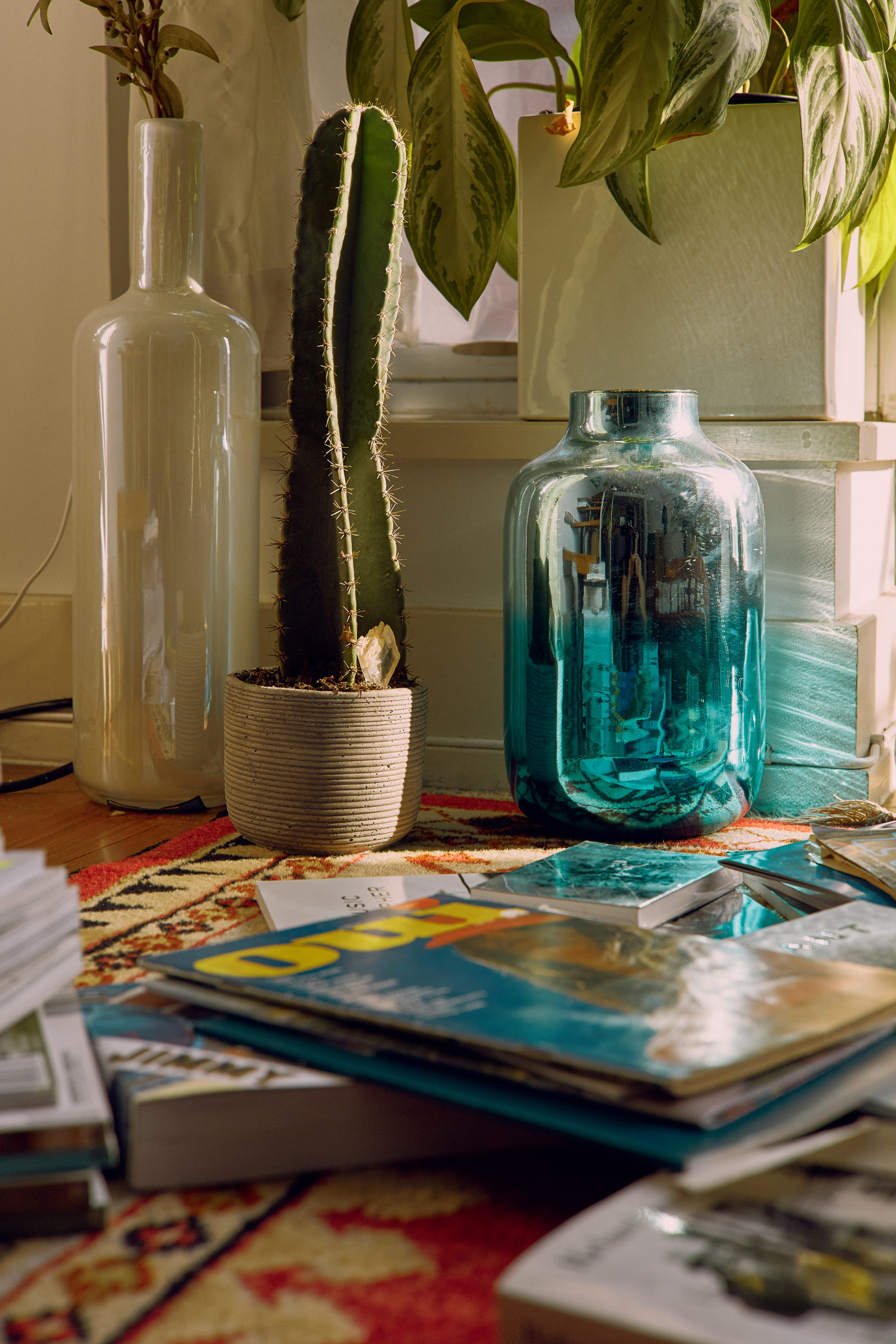
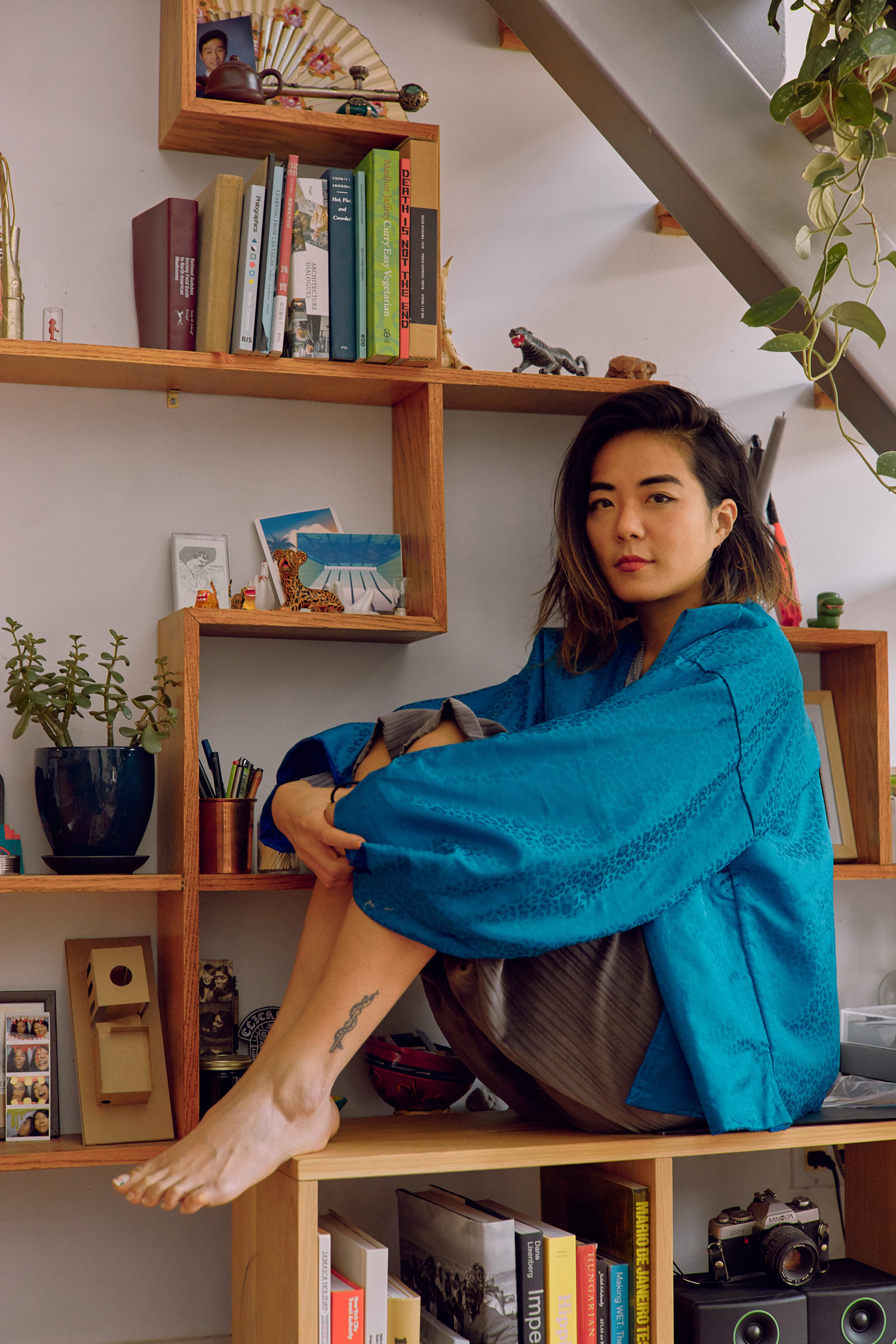
It’s a position so many immigrants find themselves in. What does that new kind of culture and identity you mentioned look like to you, as an Asian American who’s also a creative? I’m in a bit of a creative community bubble, so I can’t speak for everyone, but I do feel like there’s a lot more pride these days around identifying with your culture; in the music people listen to, what they choose to talk about, and even what they eat. There’s a lot of talk about identity right now, and of both accepting and rejecting certain aspects of social norms instated by people of power. It’s important to analyze why and how we see our positions in society and with each other, then to read the underlying context. For example, recognizing that Asian Americans are affected by the “model minority” stereotype, which is superficially positive because it pits us against other minorities. I think it’s so important to understand these varying positions and perspectives, and how to support one another through critical analysis of culture and history. I think we’re at a place where we need to stop assuming, and start understanding.
That aspect of support is so important. I noticed you recently made a series of pieces called, “Ode to a Soup Dumpling,” which feels pretty directly related to this discussion. What drove you to create these pieces, and do you ever feel pressured to make work about your experiences as a Chinese American, or fear being pigeonholed by those? I wanted to make a tribute to some of the things about my culture that I take for granted. I’m in the middle of processing and strategizing a show that I want to dedicate to my roots, without it coming off as so “Asian American student union.” (laughing) My issue has always been in how to address this pride I have in my identity without being so direct. So, I started thinking about the things we often take for granted, like food. Even something small, like a particular ingredient, is a way to show your pride and share your connection to culture. As of now, I want to do something for the show that revolves around ingredients; something as simple or seemingly insignificant as a wedge of ginger, or clove of garlic, or some soy sauce. These are the essential bases of a lot of Asian dishes, and they’re threads that tie us together.
I’m not sure about being pigeonholed based on my ethnicity, though. I don’t feel like I know that many artists who are. Do you?
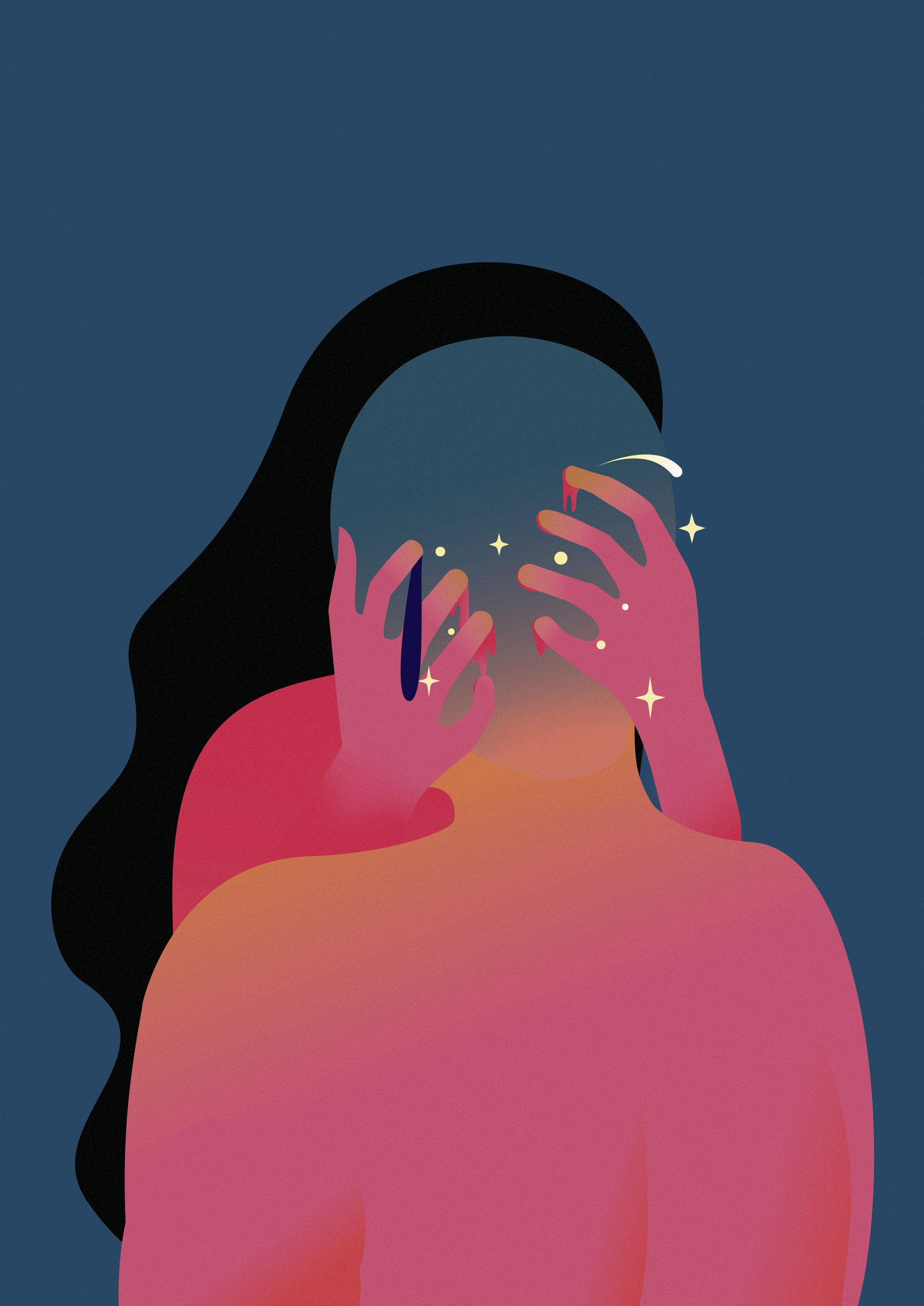
“Translating complex emotions is one of my favorite things to tackle. ‘What is love?’ for example. That may seem incredibly easy, but how do you draw ‘love’?”
Some, yes. It comes up with my artist friends who are POC, or bi-racial, like I am. If you make within that cultural identity space, people seem to want to categorize you as the artist who makes work about their ethnicity and cultural identity. On the other hand, if you choose to reject that, or to address other themes in your work, people will criticize that or call you out on it. It’s an impossible position to be in. That’s true. That does happen. When I first started drawing in college, I drew a lot of sexual things, and became known as the girl that drew butts. (laughing) I did butt pins, and prints, and bags. I drew all these cool-looking butts, because I was just really into the concept of the butt—everyone has one!
After a while, though, I noticed that people were like, “Oh yeah, you’re the girl that does that thing.” I was just drawing it because I thought it was fun. I wanted to say, “Why do you have to put me in a box?” It just seems like people will look at you and your work once, and then pass you off as the person who does this one thing without taking the time to actually learn about you or your work. I used to care about that a lot, but I realize now that it doesn’t actually matter that much. I’m going to continue to evolve and change when something new speaks to me or inspires me. I don’t need to worry so much about how other people are categorizing me, as long as I’m learning about myself in the process, and feel good about how I’m categorizing my own work.
That’s a great reminder. It’s easier now more than ever to see someone’s work in a social feed, categorize it, and then keep scrolling. And that one touchpoint with their work can become a sort of meme for how people see anything else that person makes. So, how do you categorize your own work, or what would you say exemplifies it? I think about that constantly. My biggest fear was always that my work would get too boxed in. But our society makes it hard not to do that, especially in the creative industry, and in a society that is largely logic-oriented. In order for people to understand what you do, you need to be able to categorize it in some way, and that’s okay. I also naturally categorize people who work in completely different fields than I do. So, I’m starting to realize that it’s normal to do that.
When you look closely at my entire body of work, it’s all pretty different. But, one thing I’m trying to position myself as being is a visual communicator—someone who’s really good at communicating and translating complex ideas into something visual that people can look at and come to their own conclusions about.
I definitely see that in your commercial work. You also have quite a body of personal artwork that communicates complex ideas and themes through a visual narrative. Translating complex emotions is one of my favorite things to tackle. “What is love?” for example. That may seem incredibly easy, but how do you draw “love”? Or, how do you depict “hate”? I have a project coming up where I’ll be depicting the idea of “future”. So, I have to ask myself, “What does the ‘future’ look like?”
When I have projects like that, I’ll do some research. I watched a video the other day about the theoretical physicist Michio Kaku, who has some really interesting theories about what the future holds. I’ll do a lot of reading and research about topics like that when I can’t personally speak to them, because there’s always someone who knows more than me.
We don’t have to know everything! It’s very reassuring. Yes, it is! (laughing)
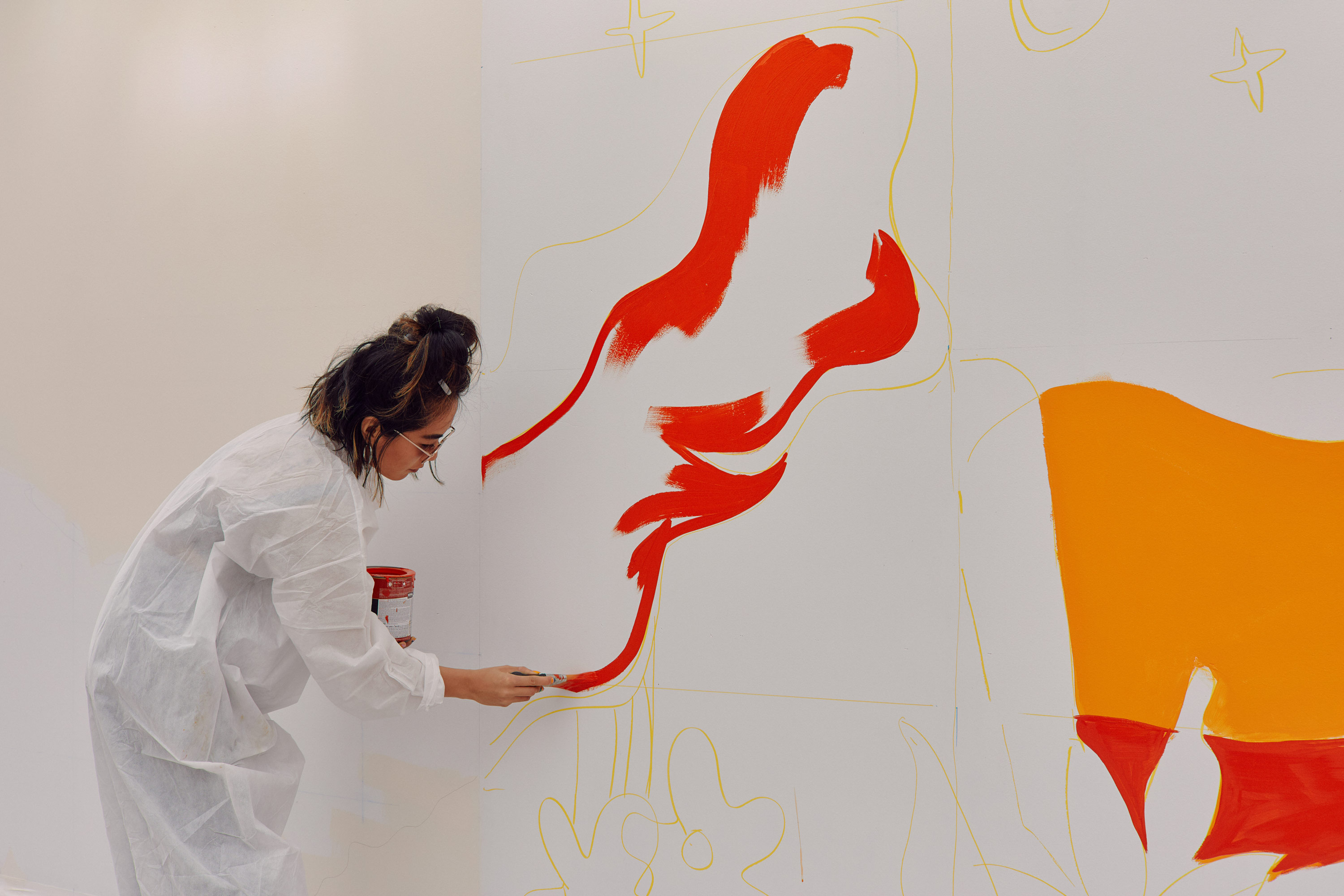
“The best advice I can give would be to keep challenging your comfort zone. Gain different perspectives, and push outside of your bubble. It’s so easy for creatives to get stuck like that, where they’re just echoing each other’s ideas and processes.”
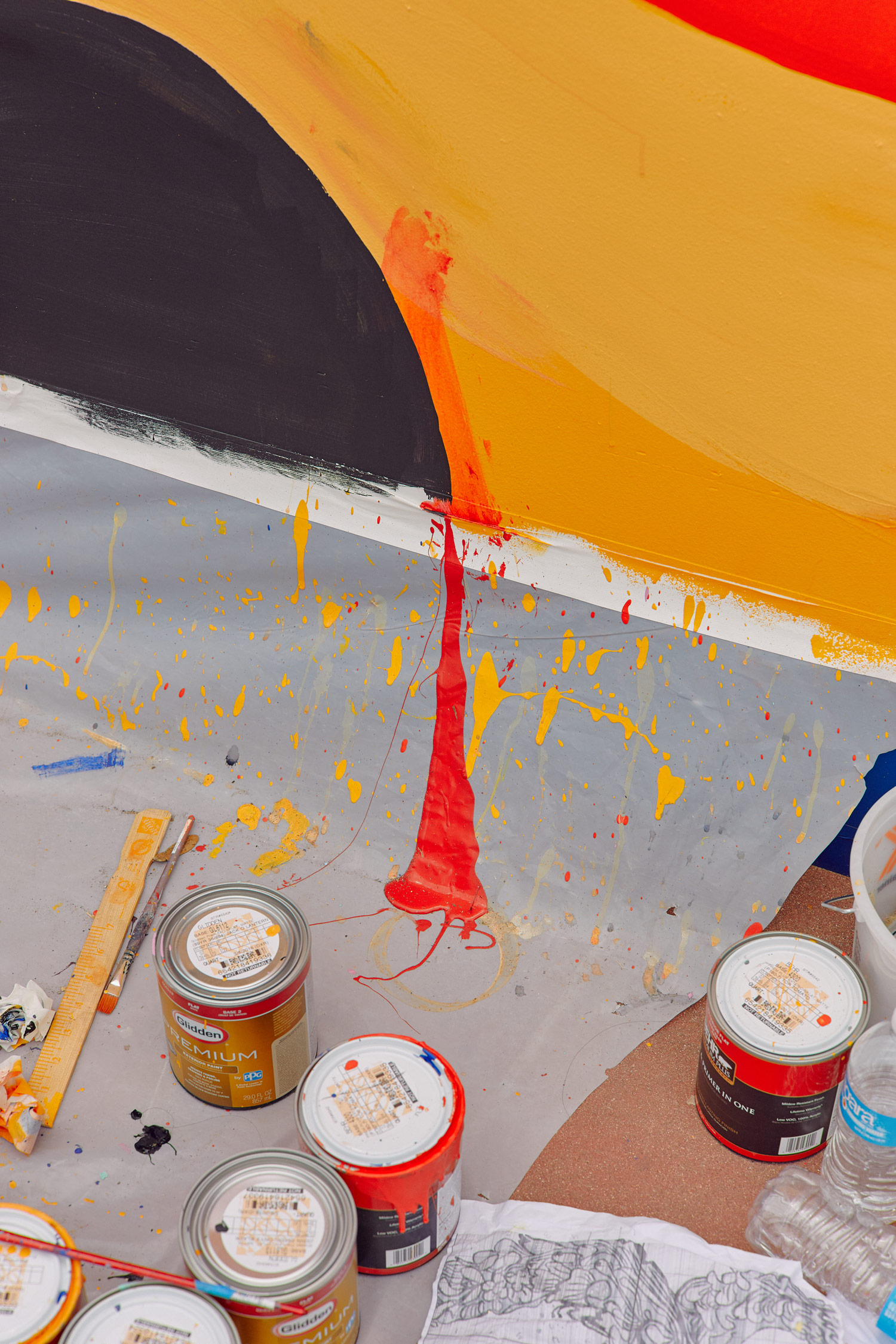
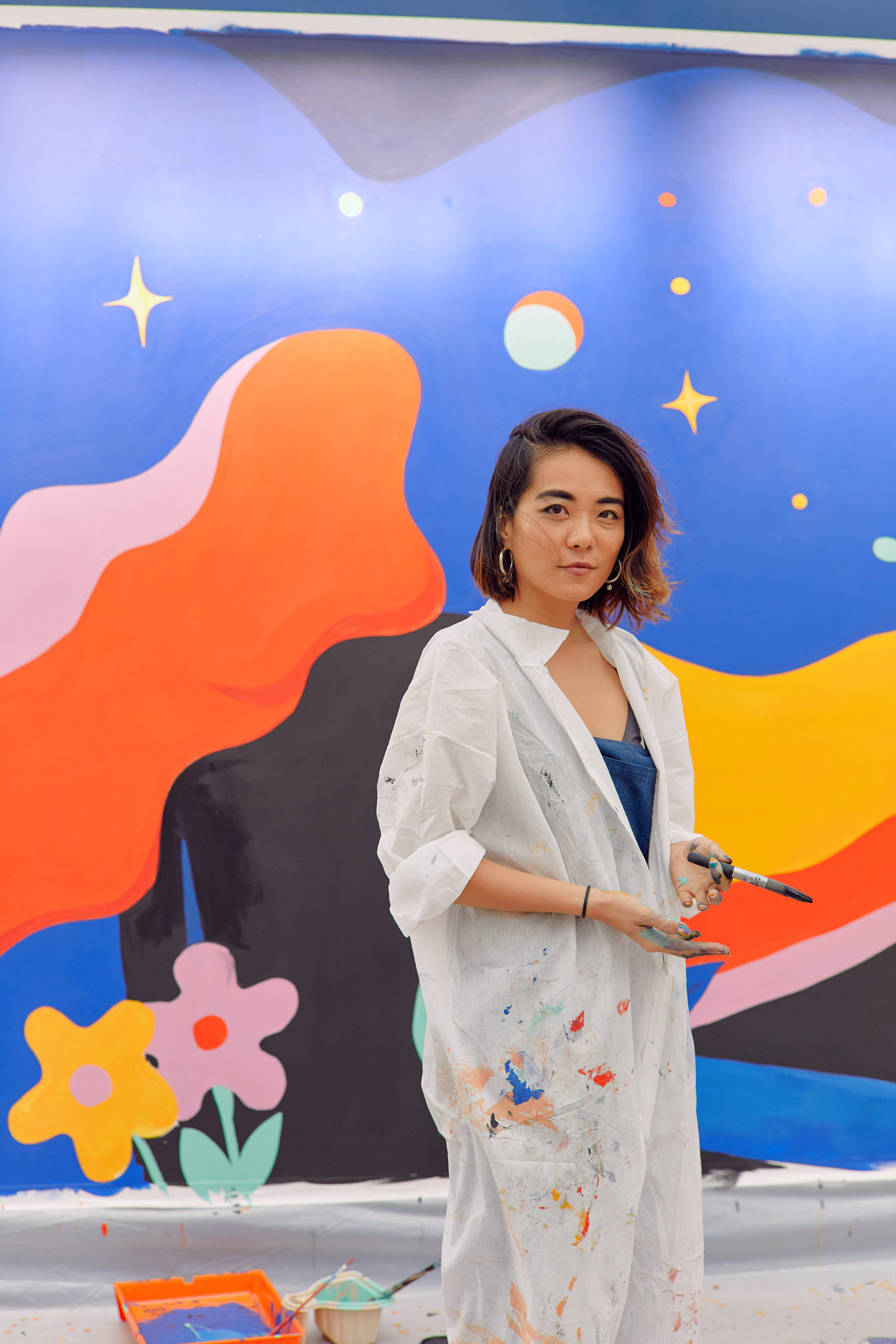
Speaking of subjects you do know well: the female form seems to recur in your visual narratives. You’ve said that you’re fascinated by the female body, and its representation in certain types of media, like porn. I’m curious about that, and also about how you’re able to represent it in a way that isn’t sexualized, but that celebrates sexuality instead. Sex was a taboo subject in my family. My parents didn’t even tell me about it; I had to find out about sex from my friends. It was really embarrassing. Across the world, sex is often very hush-hush and there’s a cultural stigma around it—even though it’s such a natural activity. So I’m constantly trying to rework what sex is, and means to me, despite what I’ve been told. Why are there strict labels associated with being promiscuous or prude, or with monogamy and polyamory? Anything is fine as long as you are comfortable. I like to think about that spectrum, and talk to various types of people who have differing experiences and opinions. Beyond that, I think the female form is also just interesting to draw. I like the male form as well, but I’m closer to the female form, so it’s easier for me to depict it. The women in my work don’t look sexualized in the sense of objectification; they’re inspired by an energy derived from human pleasure.
Yet, in the past, people have called that work out for being too sexy. Do you feel like they’re more open now to seeing it as a way of celebrating the female form, rather than feeling threatened by those representations? I’m surprised by how open people are with me now. Especially people who have seen my work, but have never met me—they’re very open about their identity and their sexuality. When I meet somebody new, I don’t usually jump to those kinds of topics so fast, unless they give me the opening to do so. A lot of times, though, people who know my work will just immediately go into that. It’s so cool. That’s how I can tell I’m doing my job well; because I’m able to communicate those ideas well enough for others to feel comfortable in communicating them back to me.
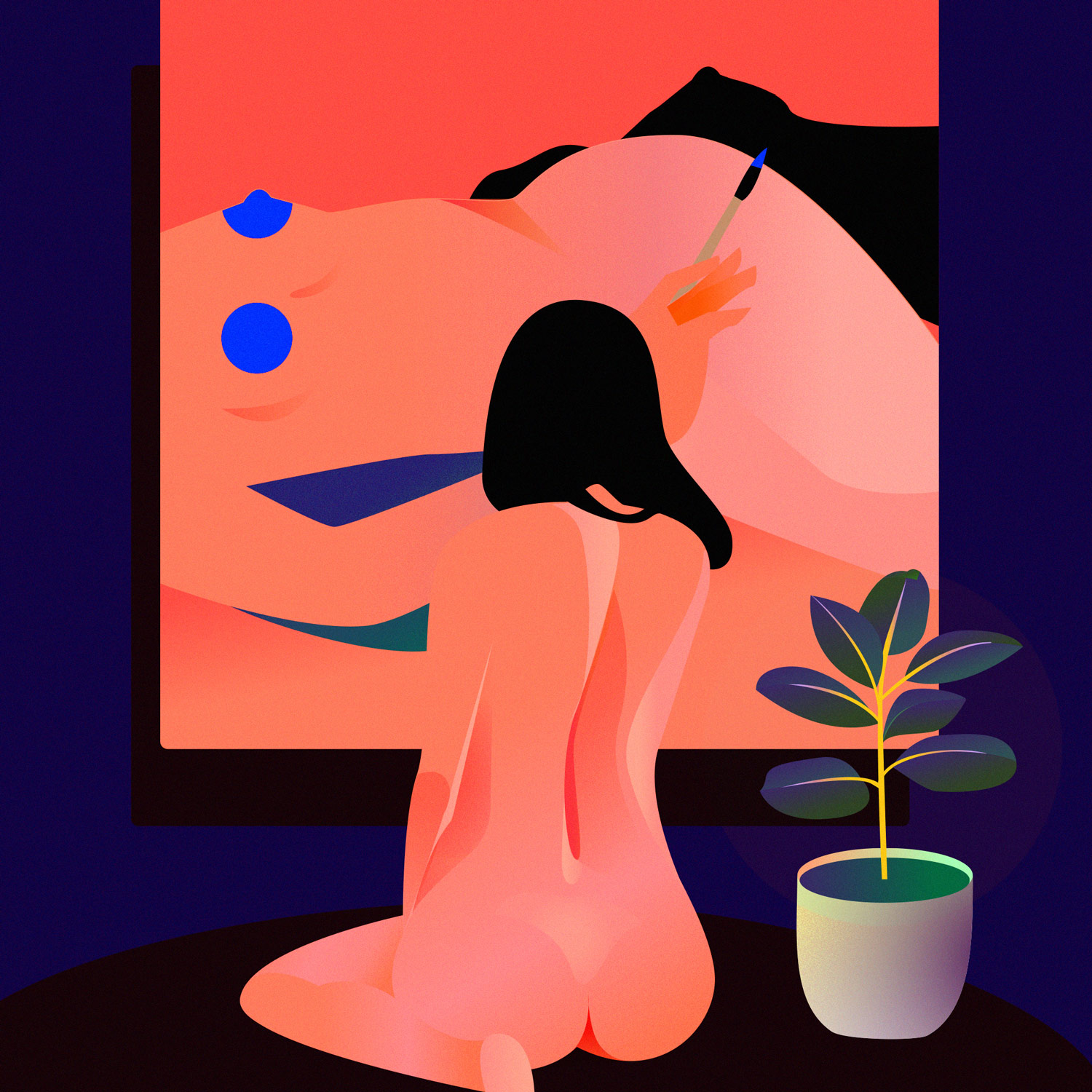

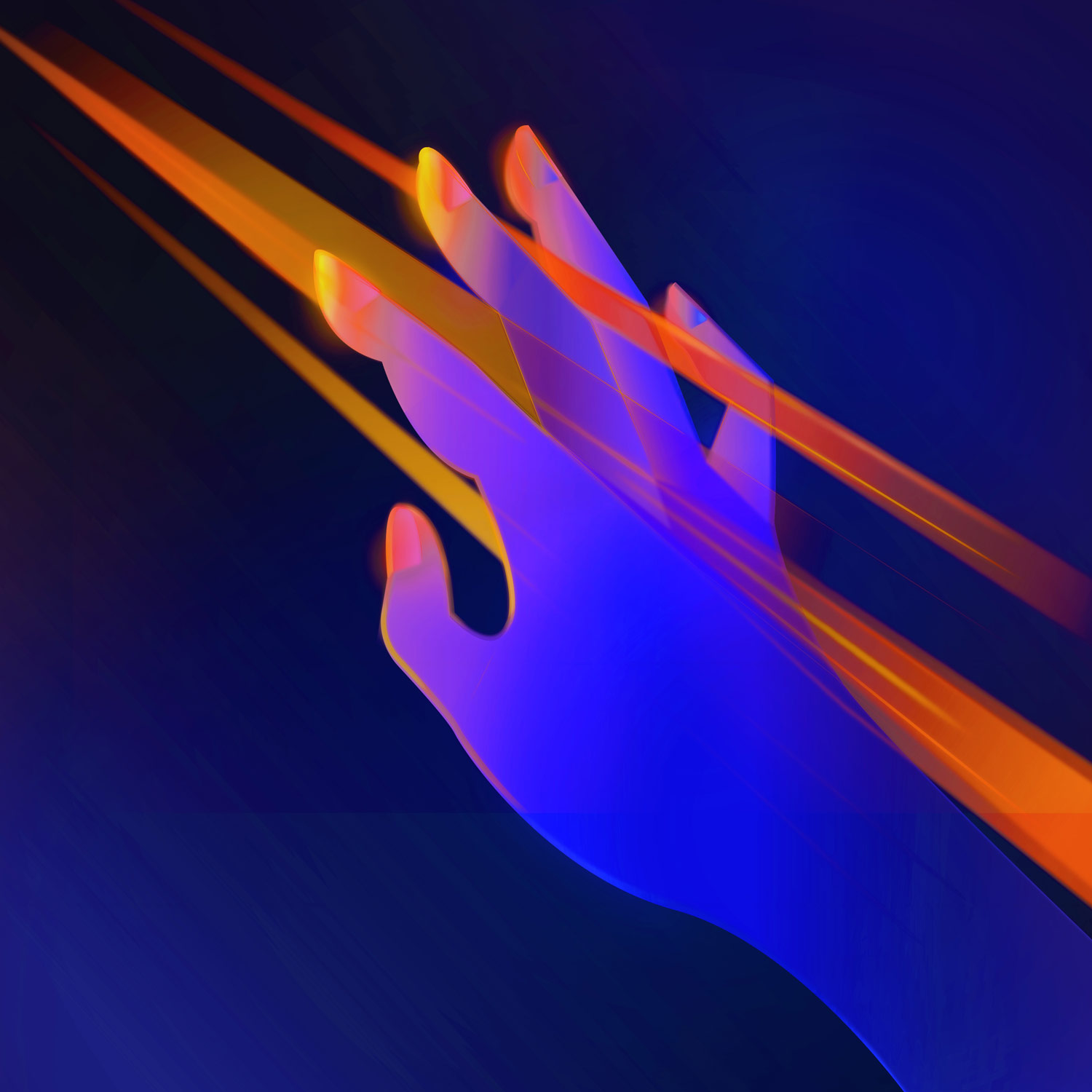
“…I’m constantly trying to rework what sex is, and means to me, despite what I’ve been told…The women in my work don’t look sexualized in the sense of objectification; they’re inspired by an energy derived from human pleasure.”
You’ve already communicated something so intimate to them through your work. It’s a way of establishing trust, even though you’ve never met. I feel a little like a therapist sometimes! I’ll find myself in these deep conversations with both friends and people I’m just meeting for the first time, and I’ll think, “Oh my god! You really trust me. Thank you.” I appreciate that a lot, and definitely don’t take it for granted.
You’re impacting people’s lives through your work, and those conversations, which is so cool. You’ve made personal work in the past couple of years that addresses social-political issues, like your “4.8 Million” piece, and also your show, Alone Together. Artists and creative people, especially in such challenging times as these, often get asked things like, “Does art even matter?” As an artist who’s creating such meaningful, thought-provoking work in the political space, what would you say to that? I think it’s really important. At the same time, I think it’s important to also take a step back from it. There isn’t any one right way to protest. For me, the most important thing is to use art to discuss something complex in a way that allows other people to see the issue from a different perspective. Artists who do that well, do it around many different issues and topics, that aren’t just political.
Some artists are also really outspoken, and that’s awesome. But being that consistently on top of things is taxing, at least for me. There’s so much shit going on in the world right now, I feel really bombarded by it, so I’ve had to withdraw just a bit. Like the gun control situation—I’m so pissed off, I don’t even know how to process it yet, or how to turn it into artwork that could impact others. I’m not sure if that’s good, or bad, but I’ve had to step back lately from being quite as outspoken about political issues.
Instead, I’m taking the time to read about those issues, and research them and have conversations with other people about them, without necessarily reacting to them. I’m pretty sure it will all come out when it’s ready, in a form that matters. I think that’s also why I’ve been shifting into work that’s more about my identity. It’s feels like a more positive thing for me to focus on right now.
To take the time to meaningfully process what’s going on in the world before approaching a piece of work about it, is something I respect a great deal. I feel like a lot of companies want to try to jump on these big issues without really thinking through them before they react. They want to be on the right side of history, but without actually fully knowing what that means. Last week, I walked by a store with a sign that said, “Diversity Sale. 20% off shoes.”
Oh my god. What does that even mean? I know! I was like, “What the hell? Are you kidding me?” That’s the kind of thing that I’m talking about. It discourages me.
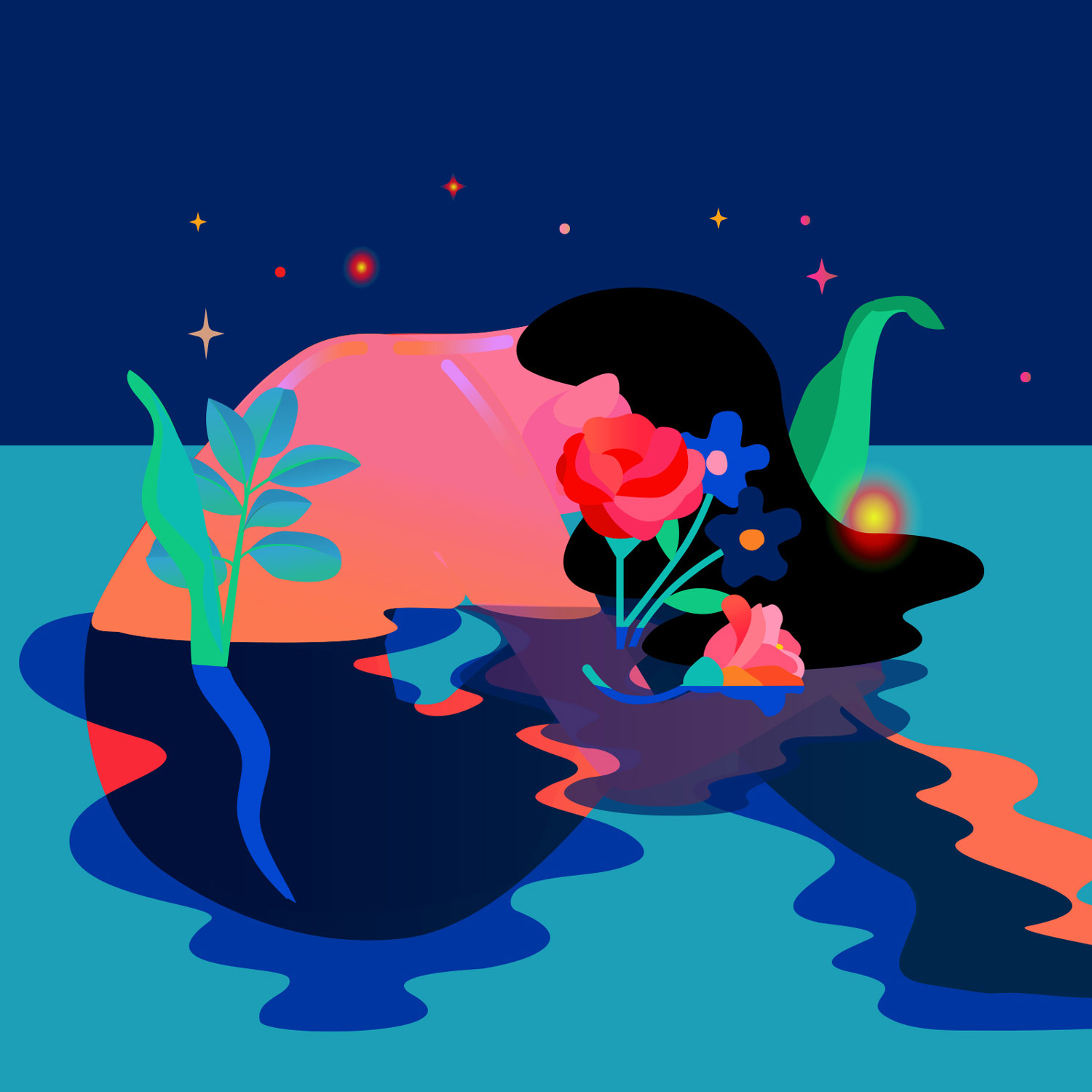
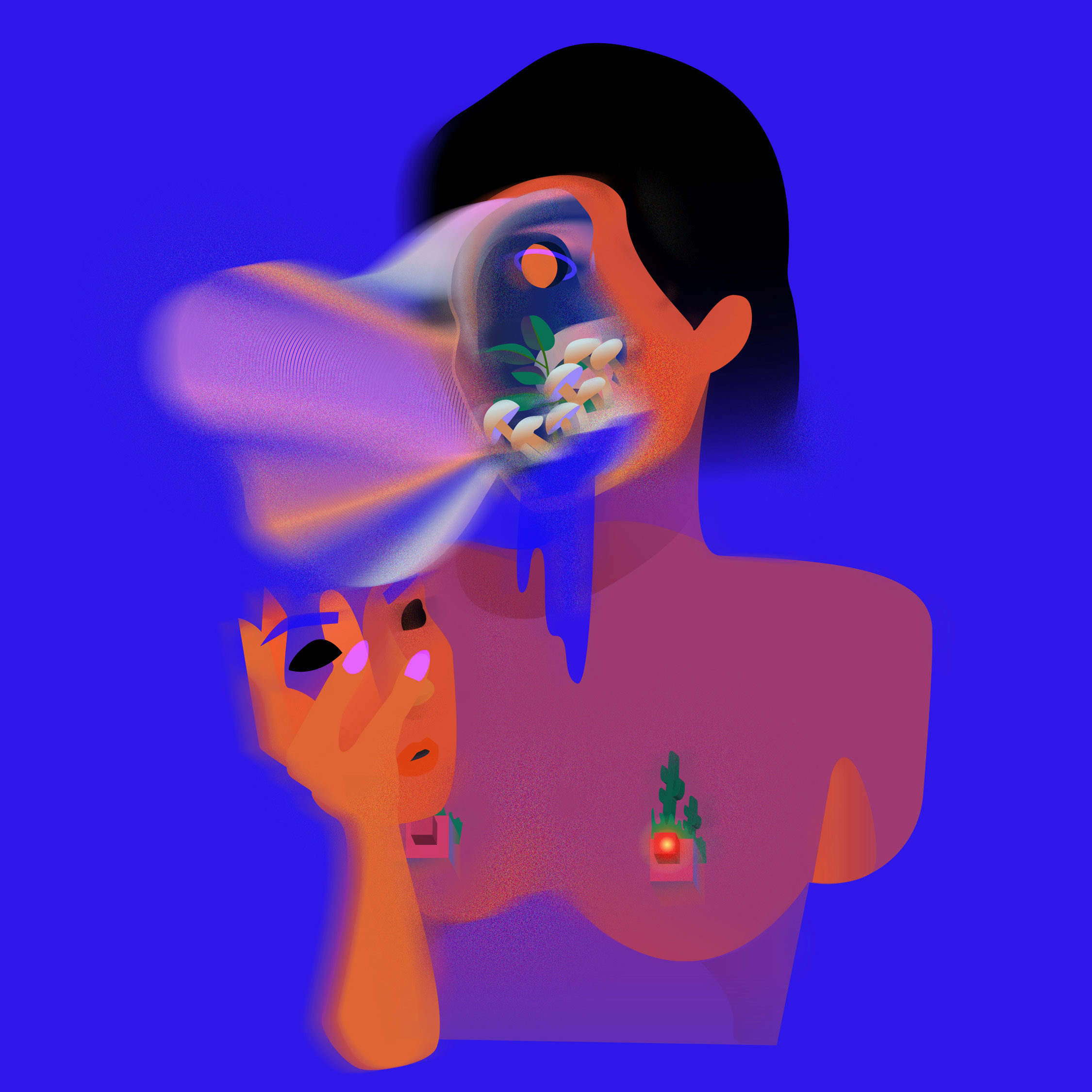
“There isn’t any one right way to protest. For me, the most important thing is to use art to discuss something complex in a way that allows other people to see the issue from a different perspective.”
Are you ever approached or pressured by companies to do commercial work that tries to capitalize off of issues like that? I don’t feel pressured to make anything that’s politically charged, per se, but the fact that companies approach me to represent their work does make me wonder sometimes, Is it because I’m a woman, and a minority? It’s definitely something I think about a lot.
There’s a trend recently of hiring people of color, women, and non-binary people to represent companies, which I think is really important, because we definitely need better representation. But part of me is also skeptical about being asked. I wonder if I’m just filling a quota, and then going to be discarded based on what I said about brands wanting to be on the right side of history. It’s good to at least be aware of that when you’re thinking about taking a project.
There are a lot of young designers and illustrators who look up to you. Is there any other advice you’d give to someone just starting out, that you wish someone would have once given you? Advice is subjective, because everyone’s so different. It’s interesting, though, because all of the cliche advice I heard back in the day is actually starting to make sense to me now. I think it all depends on what someone wants to pursue, or where they want to start out. The best advice I can give would be to keep challenging your comfort zone. Gain different perspectives, and push outside of your bubble. It’s so easy for creatives to get stuck like that, where they’re just echoing each other’s ideas and processes.
I know I’m a little stuck right now, and I fully realize I need to fix that. When I was younger, it was easier to bounce around and meet different types of people, because you’re more open to others when you’re that age. Meeting people of all ages, backgrounds, and economic classes really inspired my creative work then, and still does. When more complex issues arise, I’m able to draw on those experiences from when I was younger, because I’m in a bit of an echo chamber now.
It sounds like you’re at somewhat of a crossroads in your career, but recognize that you have the opportunity to step outside of your current community and challenge yourself in new ways again. Do you feel creatively satisfied? No. (laughing) I actually had this conversation just at lunch! I’m satisfied in a lot of ways—my job is to create every day, and that’s amazing. It’s a real privilege to get to wake up and say, “What should I paint today?” or, “What kind of work do I want to pitch?” And I will always remind myself to be appreciative of that.
I think being totally creatively satisfied is hard for a lot of artists, though. The essence of a creative person is to constantly push and challenge yourself. Otherwise, you’re just comfortable. That may work for some people, but I try to push myself a little further in order to elevate the work, and to keep it moving forward. So in that way, no, I don’t think I’ll ever be creatively satisfied—until maybe I’m dead. (laughing)
“The essence of a creative person is to constantly push and challenge yourself. Otherwise, you’re just comfortable.”
